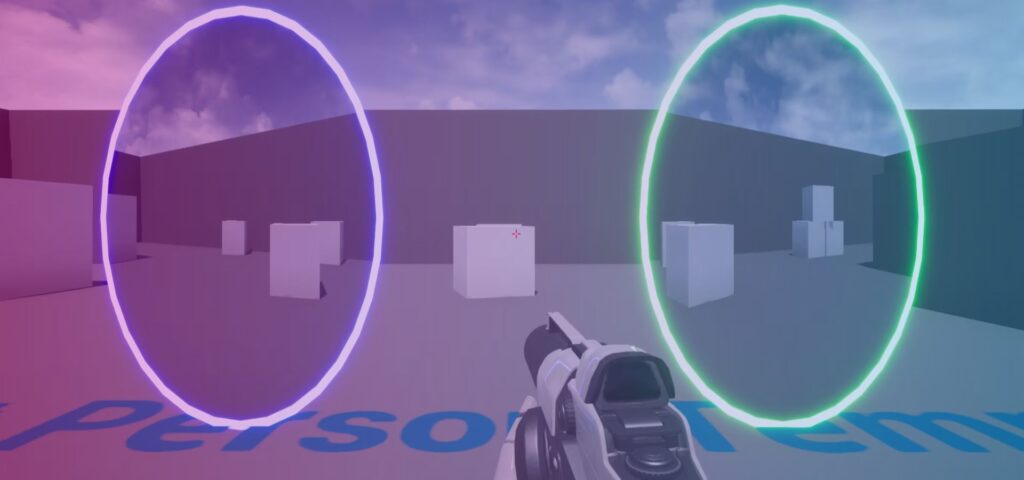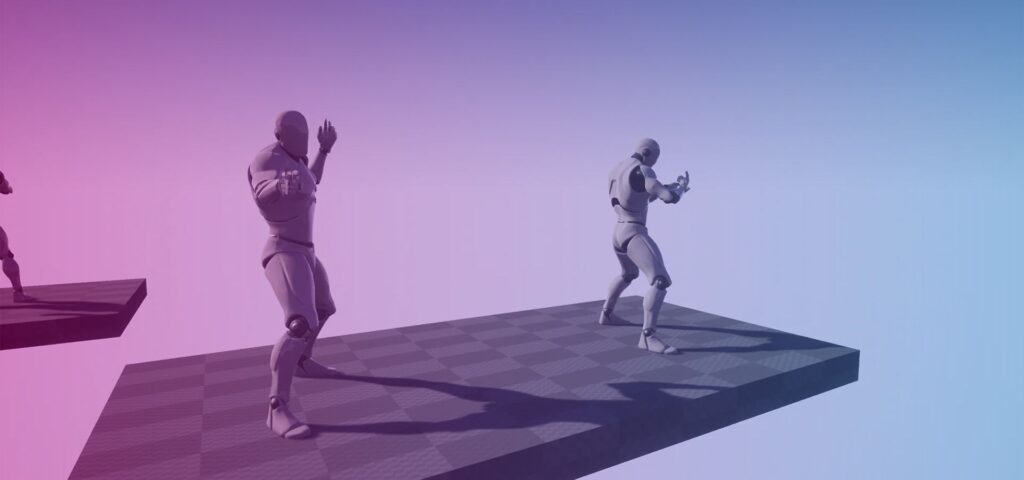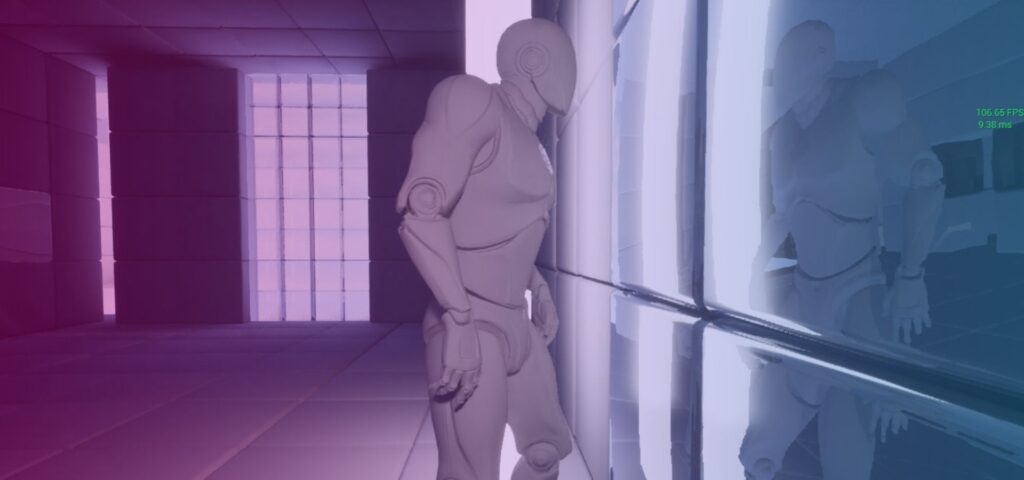Unreal Engine, renowned for its cutting-edge capabilities, empowers developers to shape gaming experiences like never before. In the ever-evolving landscape of video game development, the quest for creating immersive and unforgettable RPG (Role-Playing Game) experiences has become both an art and a science. It’s a pursuit fueled by passion, innovation, and an unyielding commitment to delivering something extraordinary. As game developers, we constantly seek to push the boundaries, to transport players into realms where imagination knows no bounds. It’s in this spirit that we delve into the realm of “Game Mechanics” – the intricate cogs and gears that power the heart of RPGs and can elevate your creation to professional-level excellence.
The world of RPGs has witnessed a remarkable evolution over the years. From humble pixelated beginnings to the sprawling, lifelike universes of today, RPGs have consistently been at the forefront of gaming innovation. In this exploration, we’ll uncover five game mechanics that have the power to reshape the RPG landscape within Unreal Engine. These mechanics are more than just tools; they’re the building blocks of unforgettable adventures, the keys to unlocking immersive storytelling, and the gateways to unparalleled player engagement.
Unreal Engine is renowned for its cutting-edge capabilities, empowering developers to craft gaming experiences like never before. It’s the canvas upon which these game mechanics can truly shine, taking your RPG to new heights of realism and immersion. In this journey, we’ll not only explore the mechanics themselves but also how Unreal Engine enhances and supports their implementation.
As we venture deeper into these game mechanics, we’ll discover how they have the potential to transform your RPG from a mere game into a captivating journey within the powerful framework of Unreal Engine. We’ll explore the intricacies of each mechanic, uncovering their impact on gameplay, storytelling, and player interaction. Whether you’re a seasoned Unreal Engine developer or an aspiring creator, this journey promises insights, inspiration, and a deeper understanding of the artistry behind RPG design. So, let’s embark on this quest to harness the power of game mechanics and propel your RPG within Unreal Engine into the realm of professional excellence.
Table of Contents
Here are 5 game mechanics that can take your RPG game to the next level.
1. Ultra Dynamic Sky

Incorporating the “Ultra Dynamic Sky” system into your RPG within the Unreal Engine can significantly amplify immersion and visual appeal. In this guide, we’ll delve into the step-by-step process of setting up the ultra-dynamic sky, configuring ultra-dynamic weather, and adding weather material effects to your game – all within the Unreal Engine. These elements, when harnessed effectively, will metamorphose your game world into a living, breathing entity that profoundly shapes the player’s experience.
Setting Up the Ultra-Dynamic Sky in Unreal Engine
Initiate the creation of an ultra-dynamic sky by first crafting top-tier skybox textures that faithfully portray various times of day and weather conditions. Proceed to implement a rendering system that effortlessly transitions between these textures, responding to in-game time and weather fluctuations. Construct a dynamic day-night cycle system that smoothly shifts between different lighting scenarios as time advances, manipulating the intensity and color of the directional light source to replicate the sun’s or moon’s movement. Crucially, introduce realistic models and textures for celestial bodies like the sun, moon, and stars, utilizing Unreal Engine’s capabilities to calculate their positions based on the game’s time and the player’s location.
Configuring Ultra-Dynamic Weather within Unreal Engine:
To usher your game world into true dynamism, design a spectrum of weather patterns, encompassing rain, snow, fog, and thunderstorms, all within the Unreal Engine’s versatile environment. Construct a weather system that can seamlessly shift between these patterns in response to in-game events or the progression of time. Leverage its powerful particle systems to simulate weather-related elements, such as raindrops, snowflakes, and fog, allowing precise fine-tuning of particle behavior to align with the current weather conditions. To enhance the auditory experience, employ its audio capabilities to infuse weather-specific sound effects, such as the rhythmic pattering of rain on surfaces or the resounding thunderclaps during storms. For the visual aspect, utilize its post-processing effects to replicate the visual distortions induced by heavy rain or the immersive haze of thick fog.
Incorporating Weather Material Effects within Unreal Engine:
For an added layer of realism within the Unreal Engine environment, create a system that dynamically adapts material properties (e.g., shaders) according to the presence of rain or water on surfaces. Employ its sophisticated shaders to impart a wet appearance to surfaces during rain, gradually transitioning to dry as the weather clears. Implement mechanics that respond to weather conditions, enabling characters and objects to leave distinctive footprints or interact differently with the environment. Characters may encounter challenges like slipping on icy surfaces or leaving muddy footprints in the rain. Modify the visual attributes of foliage, terrain, and environmental elements to mirror the current weather conditions. It facilitates these changes, allowing trees to sway in the wind during storms and snow to accumulate realistically on surfaces during snowfall.
By harnessing the power of the Unreal Engine to incorporate these elements into your RPG, you’ll breathe life into your game world. The ultra-dynamic sky, weather, and material effects will captivate players while also elevating gameplay through strategic influences, interactive elements, and enriched storytelling possibilities. Dedicate your time and effort to these aspects, and you’ll create an RPG that truly shines at the professional level, leaving an indelible mark on players seeking an unforgettable gaming experience.
2. Interdimensional Portals

Integrating portals or similar mechanisms into your Unreal Engine project can indeed be a powerful way to enhance your game’s immersion and gameplay. Unreal Engine provides a versatile platform for implementing these mechanics. Here’s a guide on how to harness the power of portals within Unreal Engine
Create Interconnected Worlds
In Unreal Engine, creating interconnected worlds through portals is a captivating way to provide players with a sense of exploration and wonder. Start by designing your game world in sections or levels that you want to connect through portals. Use the “Portal” actor class to define the portal’s geometry and location within Unreal Engine. Ensure that you align the portals correctly in both the source and destination worlds to maintain a seamless transition. To make this experience even more immersive, consider adding visual and audio effects that signal the transition between worlds, all within Unreal Engine’s powerful environment.
Design Puzzles or Challenges
Portals can be more than just doorways; they can serve as the foundation for engaging puzzles and challenges in Unreal Engine. When designing puzzles, think about how players can strategically use portals to overcome obstacles or reach new areas within Unreal Engine’s framework. Unreal Engine’s Blueprint system makes it easy to script interactions related to portals. For instance, you can create puzzles where players must redirect beams of light through portals or manipulate objects between different worlds, all facilitated by Unreal Engine’s intuitive design tools. Experiment with different puzzle ideas within Unreal Engine to keep players engaged and mentally challenged.
Implement Time Travel or Dimension Hopping
It offers the flexibility to implement complex gameplay mechanics like time travel or dimension hopping through portals. To achieve this, create multiple versions of your game world, each representing a different time or dimension, all while utilizing Unreal Engine’s powerful capabilities. Then, use portals as the bridges between these worlds within Unreal Engine. When a player enters a portal, triggers the necessary changes in the world to simulate time shifts or dimensional shifts, all seamlessly handled by it This can lead to fascinating narrative possibilities, such as altering the past to affect the present or exploring parallel dimensions with varying gameplay dynamics, all made possible with Unreal Engine’s robust toolkit.
Harnessing the power of portals in Unreal Engine requires a solid understanding of level design, blueprint scripting, and visual effects, all of which are well-supported by it’s extensive features. As you work on your project using Unreal Engine, don’t hesitate to iterate and playtest extensively to ensure that the portal mechanics feel intuitive and enjoyable for players. With its robust capabilities and creativity, you can create a gaming experience that captivates players with its immersive interconnected worlds, engaging puzzles, and mind-bending time-travel or dimension-hopping adventures. So, dive into the world of portals and unlock the full potential of your Unreal Engine project.
3. 8-Way Directional Movement

In the world of character movement within the Unreal Engine, the freedom to navigate in all directions is a game-changer that can redefine the player experience. Here, we delve into why 8-way directional movement is an indispensable aspect of your RPG, particularly when harnessed within the Unreal Engine
Enhanced Mobility
In the Unreal Engine, mobility is power. By granting players full control over their characters, including the ability to walk backward, strafe, and move diagonally, you provide them with a level of finesse that elevates their overall experience. This newfound control extends to all facets of the game, from precise exploration in dense forests to evasive maneuvers in the heat of battle. The Unreal Engine’s capabilities amplify this, resulting in a heightened sense of immersion and agency for the player.
Combat Maneuvers
The heart of any RPG lies in its combat systems, and 8-way directional movement within the Unreal Engine opens up a treasure trove of possibilities. Crafting combat scenarios that leverage this nuanced movement system introduces dynamism and strategy into battles. Players must now consider their positioning and movement carefully, making every skirmish an intricate dance of tactics, made all the more impressive by the Unreal Engine’s graphical prowess.
Platforming Challenges
An RPG developed in the Unreal Engine is not just about combat; it’s about exploration and adventure. By incorporating platforming challenges that demand precision in multiple directions, you breathe new life into your game’s world. The Unreal Engine’s capabilities make elements like jumping across chasms, scaling towering cliffs, or navigating treacherous terrain not only possible but also exhilarating. These platforming challenges not only enhance gameplay but also add layers of depth and variety that keep players engaged and excited, all within the stunning visual landscape provided by the Unreal Engine.
When integrated with the Unreal Engine, is more than just a convenience; it’s an essential tool for crafting a compelling RPG experience. It enhances player mobility, infuses combat with strategic depth, and introduces thrilling platforming challenges, all against the backdrop of the Unreal Engine’s impressive capabilities. As game developers within the Unreal Engine environment, embracing this mechanic opens up a world of possibilities, allowing you to create a game that captivates players by offering them unparalleled control and a richly textured world to explore. So, within the Unreal Engine, don’t just move forward—move in all directions, and watch your RPG reach new heights.
4. Procedural Instance Spawner

In the dynamic realm of game development, crafting an immersive and lifelike natural environment is a top priority. A powerful tool to achieve this feat within the Unreal Engine ecosystem is the Procedural Instance Spawner by InfinaWorks. This versatile tool has been purpose-built to breathe life into Unreal Engine game environments, utilizing procedural techniques to spawn instanced static meshes, whether during runtime or within the Unreal Engine editor.
Runtime Spawning
The Procedural Instance Spawner is a dynamic masterpiece, offering the ability to spawn instances dynamically during gameplay, making it a perfect fit for Unreal Engine. This dynamic element introduces an unpredictable and authentic layer to your Unreal Engine game world, elevating player engagement and immersion. Picture navigating an ever-changing forest, where trees and rocks are spawned dynamically, providing unique challenges and experiences with each playthrough—all made possible within the Unreal Engine environment.
Efficient Utilization of Background Threads
To ensure optimal performance in Unreal Engine, this spawner intelligently harnesses background threads. Even as the instance generation process unfolds, the Unreal Engine game continues to run smoothly. This means that, within the Unreal Engine environment, players can explore your meticulously crafted world while the procedural spawner operates seamlessly in the background, effortlessly populating the environment with life and intricate details.
Hierarchical Synchronization
The Procedural Instance Spawner isn’t just about random placement—it excels in supporting complex world structures, making it an invaluable addition to the Unreal Engine toolkit. Through hierarchical synchronization, it ensures instances spawn in a logical and organized manner. This level of sophistication maintains the integrity of your meticulously designed Unreal Engine game world, empowering you to retain control over every aspect of your virtual masterpiece.
In summary, the Procedural Instance Spawner by InfinaWorks, tailored for the Unreal Engine environment, is your key to crafting immersive and ever-changing game environments. Through its support for runtime spawning, efficient utilization of background threads, and implementation of hierarchical synchronization, it enables you to create dynamic worlds that captivate players, all within the powerful Unreal Engine ecosystem. Whether you’re crafting expansive open worlds or finely tuned levels, this tool is an indispensable asset, simplifying the process of bringing your virtual visions to life within the Unreal Engine framework.
5. Integrating Mirrors

In the realm of RPG game development, where every detail contributes to player immersion, mirrors have emerged as a pivotal element that extends far beyond mere reflections. Real mirrors, artfully integrated using Unreal Engine, possess the potential to revolutionize gameplay experiences, elevate visual aesthetics, and empower game developers with invaluable skills. In this exploration, we will delve into the integration of real mirrors in RPG games using Unreal Engine and how this innovative approach can upgrade the game’s look while simultaneously enhancing the developer’s expertise within Unreal Engine.
Integrating Real Mirrors in Unreal Engine
Unreal Engine, renowned for its cutting-edge graphics and rendering capabilities, serves as the ideal canvas for weaving real mirrors into the fabric of your RPG game. The process commences with the creation of a reflective material that faithfully mimics the behavior of mirrors in the physical world. By harnessing Unreal Engine’s advanced rendering technology, these mirrors can achieve a realistic capture and reflection of their surroundings. The inclusion of real-time reflections and refractions adds an authentic dimension to your in-game mirrors.
Elevating Visual Aesthetics
The inclusion of real mirrors constitutes a visual spectacle within your RPG game. When players encounter mirrors that accurately reflect their character, attire, and the game world, an unparalleled level of immersion is achieved. This visual enhancement not only enriches the game’s depth and complexity but also captivates players by inviting them to perceive themselves as an integral part of the unfolding narrative. It’s a visual upgrade that can set your RPG apart, leaving an indelible mark on players.
Immersing Players Deeper
Real mirrors in Unreal Engine transcend their visual appeal, profoundly impacting player immersion. Picture players utilizing mirrors to assess their character’s appearance, change attire, or unveil concealed secrets. Mirrors can serve as portals to alternate dimensions, opening doors to new gameplay possibilities and narrative twists. As players interact with these mirrors, they become more intimately connected to the game world, forging a sense of presence and emotional engagement that is unparalleled.
The process of integrating real mirrors into your RPG game using Unreal Engine is no small feat, but it is an invaluable learning journey for game developers. It necessitates a comprehensive understanding of 3D modeling, material creation, rendering techniques, and intricate scripting within Unreal Engine. The expertise gained through this endeavor can significantly bolster your skills as a game developer, empowering you to undertake more ambitious and innovative projects in the future.





We’re a group of volunteers and starting a new scheme in our community. Your website offered us with valuable information to work on. You have done a formidable job and our whole community will be grateful to you.
I’d have to test with you here. Which isn’t something I often do! I take pleasure in studying a submit that will make folks think. Additionally, thanks for allowing me to comment!
Does your blog have a contact page? I’m having trouble locating it but, I’d like to shoot you an e-mail. I’ve got some ideas for your blog you might be interested in hearing. Either way, great blog and I look forward to seeing it grow over time.
Please let us know at contact@vorldbox.com with a Subject of #PostIdeas